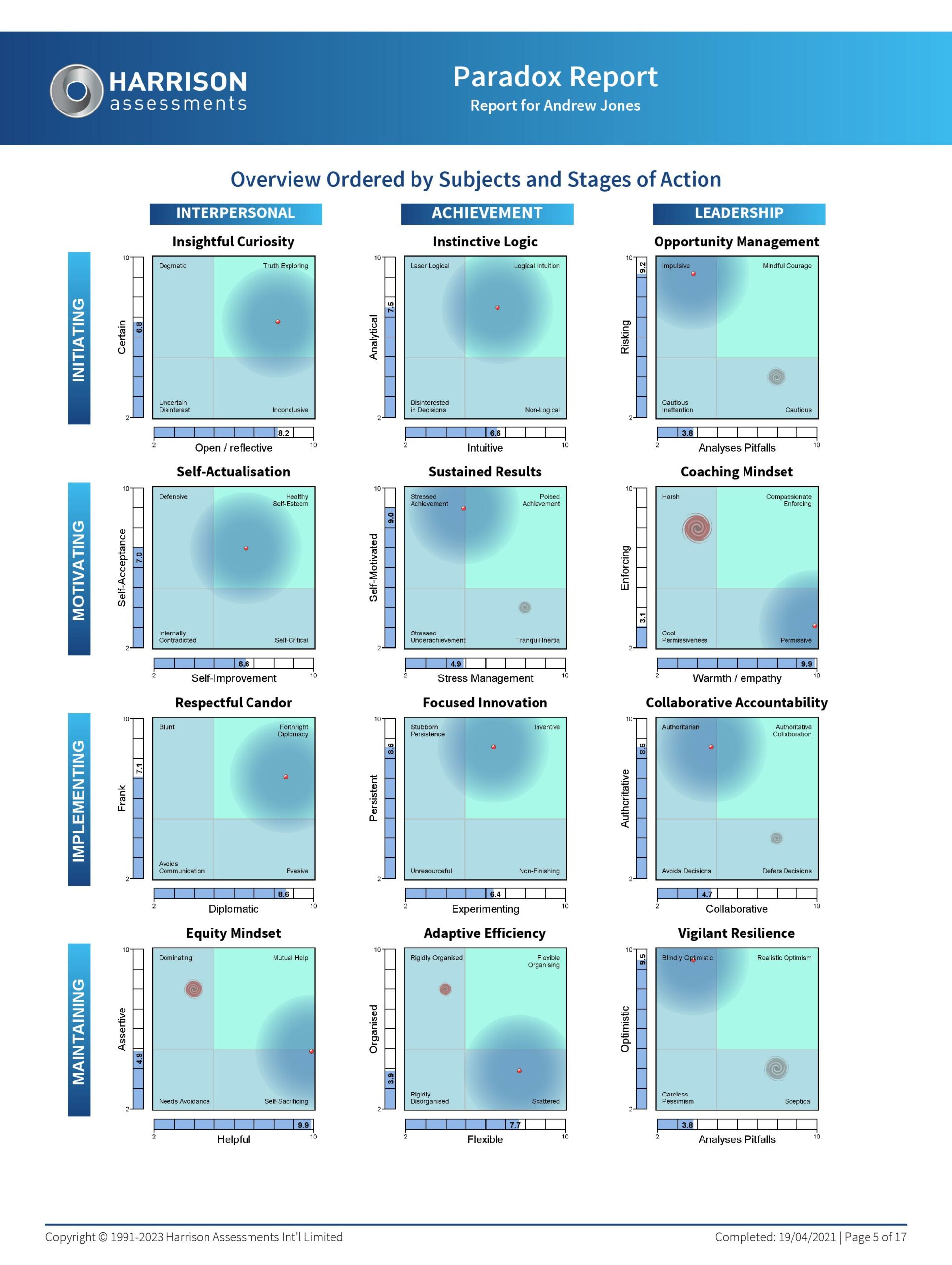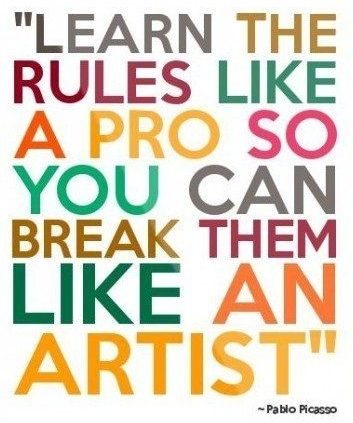What do you do with your time?

I often get asked to run time management courses. Managing time should be easy – write a list of things to do and get on and do them. So what gets in the way?
Take a look at this Paradox graph –
The Harrison Assessment Paradox report explores 12 paradoxical pairs of behaviours, or behaviours which can appear as seemingly opposite. Each of the Paradox graphs has 4 quadrants which demonstrate the potential effects of the balance between the two behaviours.
Every individual will have their own unique set of Paradox patterns; this is a sample report, against an avatar named Andrew Jones. His patterns are indicated by the red dots with the shading around, and the hurricanes, which demonstrate behaviour under stress.
Look at the 12 graphs in the report and the 4 quadrants of each graph…
Ask yourself what do people in each quadrant spend their time doing?
Here are just a few examples –
Insightful Curiosity
(top left)
High Open Reflective, low Certain – people spend their time going round the loop of asking for more opinions/ideas before forming an opinion. This can appear fluffy and indecisive. The opposite, however, may have an equally detrimental effect – people who are sure of their ideas and don’t engage with other viewpoints often spend time mopping up the mess.
Instinctive Logic
(top middle)
High Analytics low Intuitive – someone with this pattern may spend inordinate amounts of time collecting data even when a similar task has been completed before.
Opportunity Management
(top right)
High Analyses Pitfalls low Risking – people get bogged down with all the things that could go wrong, stay in their comfort zone and may spend their time using old methodologies rather than risk a new one. The opposite ie, high Risking low Analyses Pitfalls – can result in more time spent unpicking when things go wrong.
Self-Actualisation
(2nd row left)
High Self-Acceptance low Self Improvement – these people can spend time defending and justifying their own point of view from those who query it. The opposite – Low Self-Acceptance high Self improvement – these people can spend time beating themselves up for all the things that went wrong/could have gone better and are unlikely to recognize their achievements.
Combination patterns
If you look at each of these combinations of paradoxical traits in turn its not difficult to see how people spend their time. Individual Paradoxes can also interrelate between each other to create further patterns of behaviour.
One pattern which is particularly significant is a combination of high Warmth and Empathy (Coaching Mindset paradox) and high Helpful (Equity Mindset paradox). These people spend so much time looking after others, doing their jobs for them etc they often put their own jobs second. They also invariably end up with no time to consider strategic planning in the Opportunity Management paradox (top right).
If you would like to know more about the Harrison Paradox approach and how patterns can help or hinder success do get in touch. pat@quadrant1.com
Pat Hutchinson, Quadrant 1 International Ltd








 Are your rules helping or hindering?
Are your rules helping or hindering?